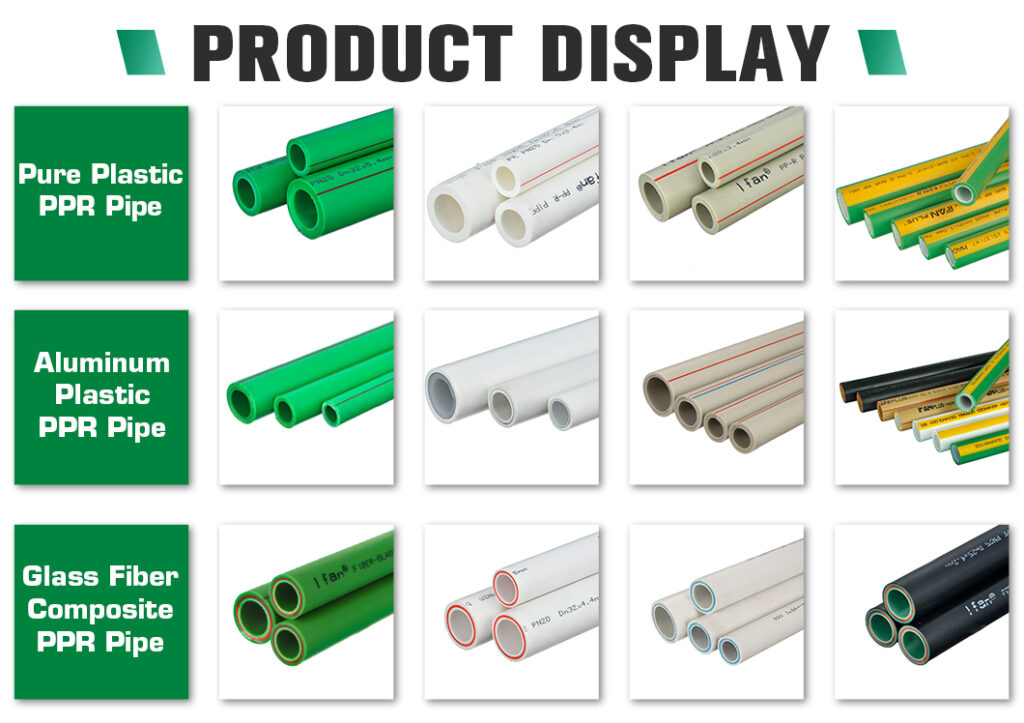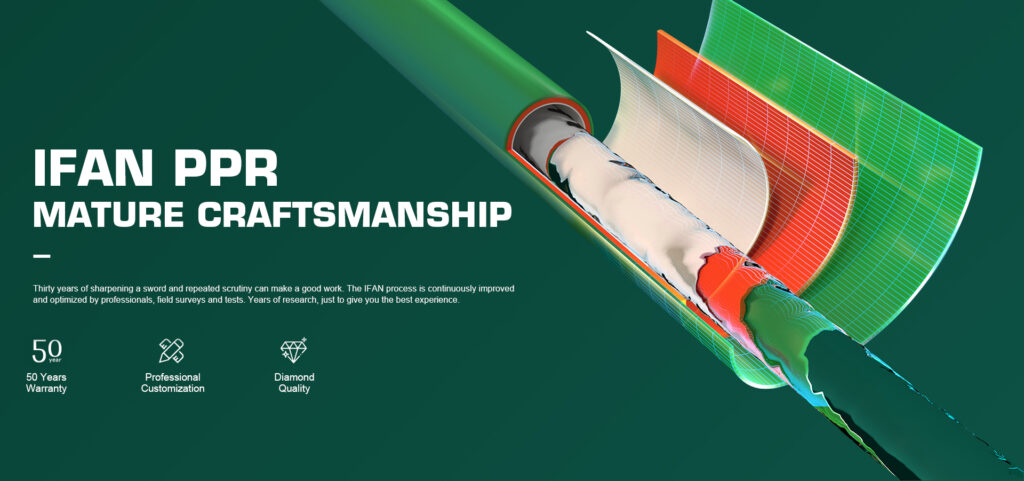In modern construction and engineering, pipeline systems are indispensable infrastructure for transporting water, gases and various liquids. Among many pipe materials, polypropylene has attracted much attention due to its excellent properties, including polypropylene random copolymer (PP-R) pipes. This article will provide an in-depth introduction to the basic concepts of PPR pipes, including their materials, uses, advantages and scope of application.IFAN factory 30+ years manufacture experience support color/size customization support free sample.Welcome to consult for catalog and free samples.This is our Facebook Website: www.facebook.com
Materials of PPR pipes
The material of PPR pipe is polypropylene random copolymer (PP-R), which is a thermoplastic material. PP-R is prepared by introducing randomly distributed propylene monomers into the polymer chain, giving it excellent thermoplasticity and chemical resistance. This material is widely used in piping systems, especially in hot and cold water supply systems.
Purpose of PPR pipes
PPR pipes are widely used in the following fields:
a. Hot and cold water supply: PPR pipes are used in water supply systems in homes and commercial buildings and can withstand the delivery of water of different temperatures, thereby meeting the requirements for sanitary hot and cold water supply.
b. Heating system: PPR pipes are also suitable for heating systems and can withstand the transportation of high-temperature water to ensure indoor warmth and comfort.
c. Industrial applications: In the industrial field, PPR pipes can be used for various chemical processes, pharmaceuticals, food processing and other industrial fluid transportation.
d. Medical facilities: Due to its excellent hygienic performance, PPR pipes are also commonly used in medical facilities such as hospitals and laboratories.
e. Agricultural irrigation: PPR pipes can be used in agricultural irrigation systems to ensure efficient use of water resources.

Advantages of PPR pipes
PPR pipes have several significant advantages over other pipe materials:
a. Corrosion resistance: PPR pipes have excellent resistance to chemical corrosion such as acids and alkalis, and will not rust or corrode after long-term use.
b. Heat resistance: It can work stably at high temperatures and is suitable for hot water supply and heating systems.
c. Hygiene: PPR pipes will not release harmful substances, ensuring the hygiene and safety of water supply.
d. High strength: These pipes have high compressive and bending strength and are not easy to break or deform.
e. Lightweight and easy to install: PPR pipes are relatively lightweight and easy to install, reducing project costs and time.
f. Long life: Properly installed and maintained PPR piping systems have a long service life.

Scope of application of PPR pipelines
PPR pipes are suitable for water supply systems with temperatures between -10°C and 95°C, while they can even withstand temperatures up to 120°C for short periods of time. This makes it suitable for different applications in a variety of environmental and climatic conditions. In addition, PPR pipes can also be used for underground burial, and various pipeline layouts can be realized through special joints and flange connection systems.
Conclusion
PPR pipes, as a modern pipe material, stand out for their material stability, excellent performance and versatility. Whether in domestic, commercial, industrial or agricultural applications, PPR pipes provide reliable solutions to meet the needs of different fields. Its hygienic properties, corrosion resistance and high strength make it one of the preferred materials for piping systems, indicating that it will continue to play an important role in future construction and engineering.

